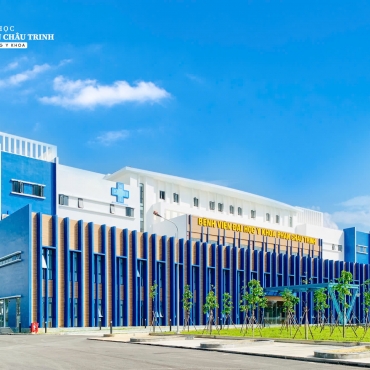Contact Admission
International Collaboration
LASER DABRA technology and interview with CEO of RA MEDICAL SYSTEMS
LASER DABRA technology and interview with CEO of RA MEDICAL SYSTEMS
More than 200 million people worldwide, including about 8.5 million Americans, have Peripheral Arterial Disease (PAD). In the United States and Europe, each year Peripheral artery disease has about 240,000 limb amputations. Nearly a quarter of patients died within 30 days and nearly half of them had amputation. With the increasing number of diabetics each year, the choice of a less expensive, more effective, safer and faster treatment for a high-risk group due to Peripheral Arterial Disease has never been is considered important.

DABRA is a groundbreaking new technology from Ra Medical Systems that can help reduce the growing number of diabetic amputations in many countries. Ra Medical Systems DABRA technology for the treatment of peripheral arterial disease has recently been approved by the FDA (Food and Drug Administration - US Food and Drug Administration).
We bring you an exclusive interview with Mr. Dean Irwin - CEO of Ra Medical Systems and give you a quick biography of Dean. He used to be the Head of Technical Research and Development for PhotoMedex, where he developed Laser systems for cardiovascular surgery and dermatology. He is a pioneer of XTRAC - the first Laser Excimer for Dermatology - in association with Harvard Medical School and Wellman Medical Center. He has published many scientific technical papers and advised the Plasma Research Center at MIT (Massachusetts Institute of Technology - Massachusetts Institute of Technology) and Intel Corporation. Dean has been granted 8 patents in the field of ultraviolet and radiotherapy, 4 patents for advanced display technology, and patents for methods, equipment and catheters for applications. Heart.
Dean Irwin - CEO Ra Medical Systems
Alice Ferng, Medgadget: Could you please briefly introduce Ra Medical Systems and DABRA technology?
Dean Irwin - CEO of Ra Medical Systems: Back in the late 1980s and early 1990s, there were some groups, for which I joined one of these groups in California, that set out to commercialize. Laser Excimer technology. We feel that, like Lasik technology in eye surgery, these Excimer Lasers can be used to clear the clogged vessel without causing a lot of injury. At this point, the Laser Excimer technology is quite new, expensive and is the only technology that we have, so that we have the laser energy inside the body where it is needed for fiber optic technology. Even then, the technology was considered very new. So a number of companies have started systems - like Spectranetics Corporation, and other Advanced Intervention Systems. With my special technology, I believe that optical fibers will not be enough to make a promise to clear these clogged circuits without injury. I set out to develop an Excimer Laser for the treatment of skin disorders.
I started Ra Medical Systems in 2002 with Ms. Melissa Burstein (Executive Vice President - Deputy Executive Director of Ra Medical Systems). And we know that one of the possibilities is to commercialize the Laser for the treatment of atherosclerosis or blockage of the arteries. But we decided to solve the problem from a different perspective: instead of creating an optical fiber, we decided to use liquids to transmit energy. We wrap a liquid in a small plastic tube and we use the liquid as an intermediate medium to remove energy from the clogged circuit. We were successful and started prototyping in 2007, and in 2012, we treated our first patient. We submitted the product to FDA in 2014. By 2017, we had received FDA approval for this product. We have treated hundreds of patients with many great success stories.
Medgadget: What background and what interests you in treating Peripheral Artery Disease?
Out Medical Systems: I come from the physical world where I was studying fusion in the 1970s. I spent a little time at MIT (Massachusetts Institute of Technology) and went to California, USA. in the early 1980s worked for the General Atomics Company on a fusion research program supported by the US Department of Energy.
Medgadget: How did you get involved with this kind of technology and application?
Out Medical Systems: Initially Laser and Mazers were what I was working with in fusion research, then I slowly started building lasers for medical applications. I have been working with lasers and optics since 1978. At first I was not interested in PAD (Peripheral Arterial Disease), when I approached a group of individuals they told me about PAD As one of the leading diseases in the world that can be easily treated with lasers, I became very interested in this. I realize that this is a problem that needs to be solved, and I think that Laser Excimer is the idea to clear clogged circuits and the real challenge is: "How do we get that laser power? ".
Medgadget: Peripheral artery disease is the case now, so what are some other things you plan to tackle in the future?
Out Medical Systems: Peripheral artery disease is what we are starting from, and we are moving on to the next coronary artery disease. Peripheral artery disease affects about 10 million Americans today. It is underdiagnosed and begins with painful and intermittent symptoms that gradually get worse and eventually lead to wounds that won't heal, become necrotic or have to be removed. There are about 150,000 cases of amputation each year due to Peripheral Artery Disease.
We have a wonderful recent case, when one of our doctors used a DABRA catheter to treat a patient who had had a double treatment at a large hospital in San Diego City, California, America. The doctor told him that he would never be able to play tennis again and may require amputation. With the DABRA catheter, we were able to rearrange and open the blockage in the leg. Just a week after his treatment, he was back on the tennis court. It is truly a miracle story. DABRA can eliminate this blockage in patients where other technologies cannot. We also believe DABRA will keep blocked arteries open for longer, even longer, than other technologies.
Medgadget: That's very impressive that DABRA has achieved. So, what makes DABRA so successful compared to other products on the market? What are the advantages and disadvantages of DABRA?
Ra Medical Systems: We really think there are four issues that the intervening cardiologists, the surgeons and the radiologists face.
The first is safety. A lot of these technologies use metal fragments or knives to cut arteries to correct clogged vessels, of course potentially causing damage to the vessels. Safety results are therefore our top priority.
To date, the DABRA catheter has had no adverse reactions, so we have a safe and complete medical record. Sadly, many of these technologies are difficult to use, require special air, fluids, and ways to keep devices cool and functional. They are often difficult to set up so another issue is making sure our equipment is easy to use.
Third, a lot of these devices only handle one group of bottlenecks. That is, they cannot overcome total blockage and can only operate on hard calcium instead of thromboembolism or thrombosis, and need multiple devices to eliminate different types of obstruction. Of course, a balloon will just compress the blockage next to the arteries. To use the ball for these congestion, of course you have to get past the bottlenecks first. Many patients have chronic total obstruction, and some areas of the body become paralyzed or dysfunctional, making it impossible for the patient to do anything in that area. With our Laser we can operate on all 4 layers of plaque.
The fourth final part is that we save a lot more. We spend about half to one third on competitive technology. This is important because a lot of patients and doctors don't have access to these expensive technologies.
Medgadget: How wide is the DABRA technology and is it difficult or easy to install it in a clinical environment?
Out Medical Systems: The laser is about the size of an airline food cart, and it can be plugged into the wall. The DABRA catheter is removed from the sterile bag and inserted into the cannula catheter so the artery blockage can be accessed through the artery system. The laser can be placed outside the sterile field, and then the sterile catheter can be used by a doctor when it is ready.
Medgadget: Could you tell me some of the technical details about Lasers and the physics behind the technology for those of us who are curious about these things?
Out Medical Systems: Laser has a wavelength of 308 nanometers, with a capacity of up to 5W. Laser Excimer Xenon chloride. This is a wavelength that even has the energy to break the bond through photochemical ablation, but is still not so low that it cannot be transmitted through other means. The doctor can control the energy and the repetition rate, typically a laser that works at 70 Hz, but the doctor can dial up to 20 Hz or up to 80 Hz. Usually no tuning is made, and we operate at the default 70 Hz frequency. Energy starts at a minimum of 10-12 mJoules / mm2, which is sufficient to degrade these materials. Your doctor may increase this to 15-16 mJ / mm2. This is also quite rare and only increases with calcium blockage.
Medgadget: How long does the treatment take?
Out Medical Systems: Laser can cut plaque up to 1 cm / sec.
Medgadget: Is Ra Medical System planning to develop products other than this Laser technology?
Ra Medical Systems: We developed the Laser Platform, and our company also developed a Dermatological Laser. We use basically the same foundation for vascular and dermatological applications. The mechanism of action is a small difference for other applications, but the basis of photochemical resection is fundamental to both.
Source https://www.medgadget.com/2017/09/first-us-physicians-saves-lives-limbs-dabra-laser.html
Translator: Dr.Nguyen Huu Tung & partner
Other healthcare
- Development history of world medicine ( 11:44 - 13/10/2017 )
- Microfluidic channel device for tumor chemotherapy ( 11:40 - 12/10/2017 )
- Higher education in the era of Industrial Revolution 4.0 ( 11:37 - 08/11/2017 )
- DRG Nerve Stimulant Device ( 11:19 - 09/10/2017 )
- Surgeons view CT, MRI, ultrasound images using 3D technology ( 11:14 - 07/10/2017 )
- Steps to make mind map (Mind map) ( 11:00 - 07/10/2017 )
- Mind mapping software ( 10:41 - 07/10/2017 )
- Mind map is what? ( 10:28 - 18/10/2017 )
- Schizophrenia is 80% hereditary ( 10:21 - 05/10/2017 )
- Ten ancient pain relievers ( 15:20 - 06/10/2017 )


















